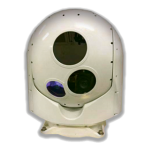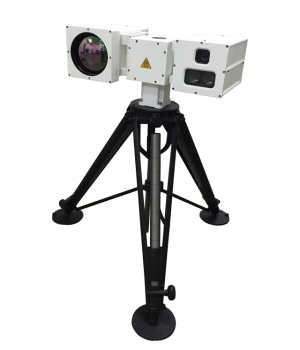An uncooled infrared camera is one in which the imaging sensor does not require cryogenic cooling. A common detector design is based on the microbolometer, a tiny vanadium oxide resistor with a large temperature coefficient on a silicon element with large surface area, low heat capacity and good thermal isolation. Changes in scene temperature cause changes in the bolometer temperature which are converted to electrical signals and processed into an image. Uncooled sensors are designed to work in the Longwave infrared or LWIR band from 7 to 14 microns in wavelength, where terrestrial temperature targets emit most of their infrared energy.
Uncooled cameras are generally much less expensive than their counterparts, the cooled infrared cameras. The sensors can be manufactured in fewer steps with higher yields relative to cooled sensors, less expensive vacuum packaging, and uncooled cameras do not require cryocoolers, which are very costly devices. Uncooled cameras have fewer moving parts and tend to have much longer service lives than cooled cameras under similar operating conditions. Security applications often require continuous operation of cameras to avoid the possibility of missing any threats. Cooled cameras will generally require servicing after 1-2 year of operation, while an uncooled camera might work continuously for years.
Showing all 2 results


